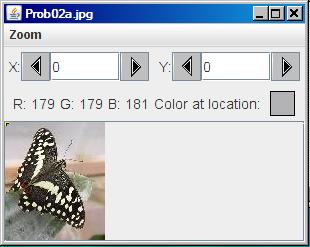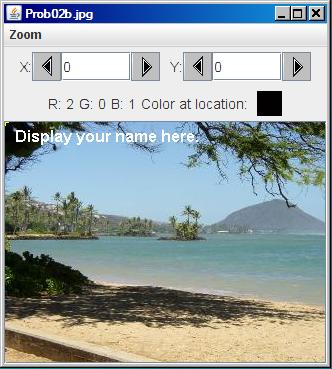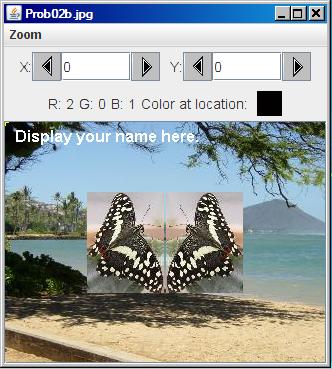| << Chapter < Page | Chapter >> Page > |
Revised: Sun Apr 03 11:56:24 CDT 2016
This page is included in the following Books:
This module is one of a series of modules designed to teach you about Object-Oriented Programming (OOP) using Java.
The program described in this module requires the use of the Guzdial-Ericson multimedia class library. You will find download, installation, and usageinstructions for the library at Java OOP: The Guzdial-Ericson Multimedia Class Library .
I recommend that you open another copy of this document in a separate browser window and use the following links to easily find and view the Figures and Listings while you are reading about them.
In this module, you will learn how to:
Program specifications
Write a program named Prob02 that uses the class definition shown in Listing 1 and Ericson's media library along with the image files named Prob02a.jpg and Prob02b.jpg to produce the three graphic output images shown in Figure 1 , Figure 2 , and Figure 3 .
Figure 1 - Raw butterfly image.

Figure 2 - Beach scene with student's name added.

Figure 3 - Composite image.

May define new classes
You may define new classes as necessary to cause your program to behave as required, but you may not modify the class definition for the class named Prob02 given in Listing 1 .
The facing butterfly images
The two facing images of the butterflies in the final output picture are separated by two pixels and those two images as a pair are centered in thepicture of the beach.
Required text output
In addition to the three output images mentioned above, your program must display your name and the other three lines of text shown in Figure 4 on the command-line screen:
| Figure 4 . Required text output. |
|---|
Display your name here.
Picture, filename Prob02a.jpg height 118 width 100Picture, filename Prob02b.jpg height 240 width 320
Picture, filename None height 101 width 77 |

Notification Switch
Would you like to follow the 'Object-oriented programming (oop) with java' conversation and receive update notifications?